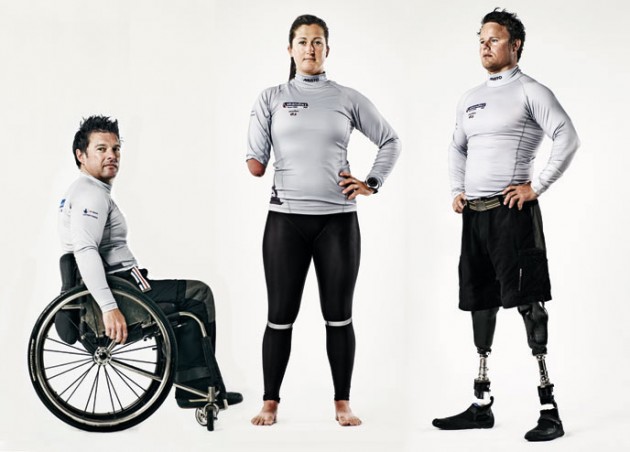Matthew Sheahan meets three Paralympic sailors who are working together to deal with their Olympic demons
As we run down the list of likes and dislikes, there are barely any comments from the other members of the Sonar team – no giggles, smirks or raised eyebrows; they know each other’s answers off by heart.
This starts to explain why John Robertson, Stephen Thomas and Hannah Stodel are so quiet in their boat. At their level, words are simply not required.
Yet they are each very different characters. Hannah Stodel (26), who was born with no right forearm, describes herself as obsessive “to extreme levels”. While she is clearly the organiser, her refusal to see herself as any different from able-bodied sailors provides one of the key focal points for the team.
“I sailed with Paralympic sailor Helena Lucas in the 29er Inland Nationals in 2004. The organisers didn’t realise we were disabled until we went up for our prizes after winning the event,” she says.
Stephen Thomas (34) who has artificial legs below the knee as a result of men ingococcal septicaemia, contracted when he was 18, was spotted for an Olympic campaign in a supermarket car park in Wales and didn’t start sailing until 2002. There’s no doubt where his focus lies – medals.
ingococcal septicaemia, contracted when he was 18, was spotted for an Olympic campaign in a supermarket car park in Wales and didn’t start sailing until 2002. There’s no doubt where his focus lies – medals.
Aside from a talent for helming, John Robertson (39), who is paralysed from the waist down following a motorcycle accident when he was 22, brings experience and wisdom to the table.
“Our training helped us understand how best to deal with adversity,” he explains. Taken out of context, you might assume this comment refers to his crew’s disabilities. That would be to misunderstand this team.
Once off the dock and under sail, the team’s physical disabilities are irrelevant. Out on the water or ashore during the debrief their focus and attention to detail is identical to any of the top able-bodied sailors.
After a day on the water observing a training session and climbing aboard on a breezy day’s sail, I realised what Robertson was referring to was their mental ability under pressure and the psychological training they have all undertaken. Despite having racing together for a decade and having hogged the podium at the world’s top events, winning multiple World Championships and Olympic classes regattas, in the last two Paraympic Games, in Athens and Qingdao, they managed no better than 6th.
Delivering Paralympic medals is something the British team as a whole has struggled with. Dealing with their Olympic demons has seen them spend a good deal of time confronting the mental issues of high-level competition.
“It was clear that there was a big psychological gap in our game,” says Robertson. He appears to shoulder the blame, but his crew rushed to his support.
“We sat down and looked each other in the eye and said: are we really prepared to dedicate another four years to this?” adds Thomas. “We knew we had the potential and we accepted that we hadn’t fulfilled something that we all wanted to do.”
“It was clear then that we weren’t going to quit,” says Stodel.

They start from a strong position, that of knowing each other inside out. You can feel their huge collective effort and sense the strength of the bond that has been forged through both sustained success and massive disappointment.
Paralympic competition in the Sonar
The 23ft Bruce Kirby-designed Sonar has been in the Paralympics since sailing was first included as a Paralympic sport in 2000. In this competition, the Sonar is sailed by three people, using just main and jib, but it is also raced worldwide by able-bodied crew, usually by four people with the addition of a spinnaker.
Paralympic events are open to male and female competitors, with slight modifications in equipment. Classification for the Sonar is based on a points system with low points for severely disabled athletes rising by scale to high points for less disabled athletes. Each crew of three is allowed a maximum of 14 points between them.




